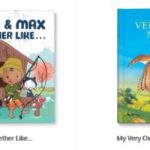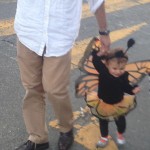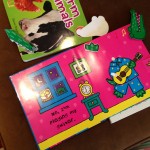At a recent party, a three-year-old girl asked one of my friends to read her the classic fairy tale “Snow White.”
The little girl pointed to the first page of the storybook, where the angry evil queen was looking in the mirror and asking: “Who’s the fairest of them all?”
When my friend read that line to himself, he remembers thinking: “I’m not reading this story to this girl, or to any tot. Snow White is a hero because she’s prettier than other women?”
But instead of closing the book and declining the storytelling ask, my friend cleverly revised the classic tale, replacing the word “fairest” with the word “smartest,” asking “Who’s the smartest of them all?”
There are loads of traditional fairy tales and stories with phrases implying certain values and beliefs that you may not want to instill in your little ones (think beauty equals goodness and niceness, for instance). But just because the stories have, as my friend puts it, some “classically awful” elements, doesn’t mean you have to skip them all together, especially if you’ve received them as gifts and they make up your child’s book collection.
Instead, you can simply revise the tales yourself as you’re reading them to your child, a strategy, inspired by my friend’s quick thinking, that is today’s hint.
In other words, as you’re reading a book to your child and you come upon a line that you find offensive, simply make a quick verbal revision.
For instance, if you’re reading “Snow White,” in addition to revising the word “fairest,” you could also replace “dopey” (the “clumsy and mute” dwarf’s name) with “quiet.” Similarly, if you’re reading “Cinderella,” you could substitute the word “mean” for the word “ugly,” if it appears before the word “stepsisters.” Meanwhile, similar easy revisions can be made to other stories — like old Curious George, Tintin and Barbar’s Travels books– that may be offensive to some who view them as containing racist stereotypes.
Or, if you’re reading “Tom Sawyer” to your kids, you could follow in the footsteps of author Michael Chabon, and replace a certain racist word with the word “slave.”
To be sure, such on-the-fly revisions become harder to make once your child can read, and you can’t easily tweak offensive elements of the tales if your little one is watching them in movie form. Accordingly, there’s always the option of simply not exposing your kids to such books and movies.
Of course, that’s a bit unrealistic. Sooner or later, your child is going to be exposed to all sorts of stereotypes and offensive language. The reality is that stereotypes are still alive and thriving in today’s world. Plus, as Stephen Marche points out in an excellent 2012 New York Times Magazine piece on “How to Read a Racist Book to Your Kids,” many children’s tales with racist phrases are otherwise excellent reads.
So, once you’re ready to move beyond quick revisions and you think your kids are ready to face reality, you could follow in the footsteps of Mr. Chabon, using the approach he used when reading “Huckleberry Finn” to his kids as a follow up to “Tom Sawyer.”
Instead of modifying a racist term, he explained a bit about why he found a certain word uncomfortable to say and involved his little ones in choosing how to modify the language (read more about Mr. Chabon’s approach in his great essay in The Atlantic on the subject).
How do you handle offensive passages in children’s books? What are your tips for dealing with them?
Follow Hint Mama on Facebook and Twitter, and read more about her and her disclosures.







Great ideas, for quick thinking when reading these stories.
No wonder we all have just image issues.
We are reading little house on the prairie right now and I am running into this a little. The talk of “Indians” as savages.. It definitely allows you to open a dialogue with your kids.
Great ideas for little ones but for older readers, I’d suggest preserving the integrity of the writing and providing a historical perspective. That’s what I do with my girls and it helps them understand the context. As you say, sooner or later they’ll be faced with the real deal. Happy reading!
I have always changed the genders of characters in books and now that my daughter is 4 she is starting to read what it really says and correcting me. So I have explicit conversations about why I change them and she decides which she likes better and sometimes we read things all different ways to satisfy everyone! It’s important to be age-appropriately explicit about all forms of oppression and to weave in discussions about skin color and gender and disability, etc when reading any and all books. It doesn’t have to be racist to talk about racism! Or full of boy characters to talk about all the ways kids can be.
When I had a daughter, I began to see these stories in a different light especially the endings “they live happily ever after…” sometimes I would also change the ending or add some values along the story…
Love the idea of changing the endings:)